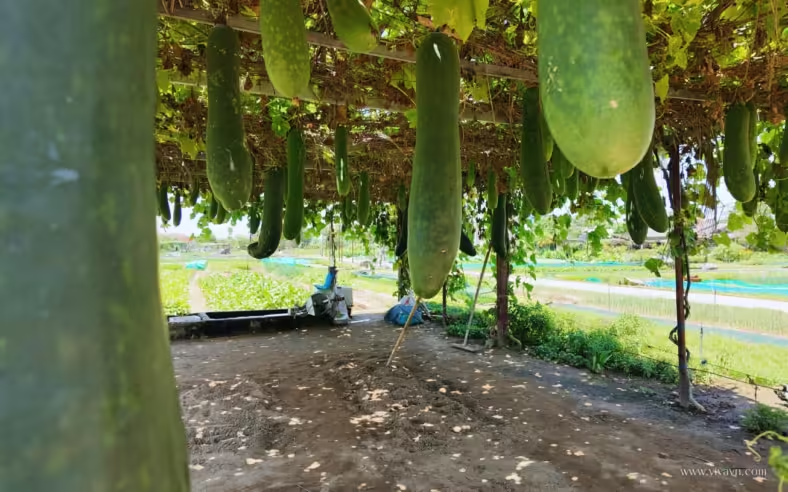
Winter Melon: A Beginner’s Guide to This Cool and Refreshing Asian Gourd
Winter melon may not be a household name in the West, but in Vietnam and across Asia, it’s a staple in both savory dishes and traditional drinks. In this post, you’ll learn what winter melon looks and tastes like, how it’s used in Vietnamese cooking, and why you should give it a try.
What is winter melon?
How to prepare
Culinary uses
Nutrition facts
Growing & harvesting
FAQs
What is winter melon?
Overview
Vietnamese name: bi dao
Shape and appearance: Long, cylindrical; green rind that may be smooth or lightly coated with white fuzz.
Flavor profile: mild, bland, and watery, with a neutral taste.
How to enjoy it: in Vietnam, winter melon is used in soups, teas, stir-fries, and a candied snack

A fresh winter melon from Vietnam with a soft white coating and delicate fuzz still visible on its skin.
Winter melon (Benincasa hispida) is a climbing vine native to South and Southeast Asia. It’s grown for its large, edible fruit, which is used in many Asian dishes, especially in countries like Vietnam and China.
Also known as wax gourd, white ash gourd, Asian winter melon, Chinese winter melon, or “bi dao” in Vietnamese. It has a green skin that may be coated with soft white fuzz, giving it a frosted or powdery appearance.
In Vietnam, two common types of winter melon are cultivated. One has a green rind with a fine white coating and fuzzy surface, while the other lacks this powdery layer but tends to grow larger and longer, some reaching over 1 meter in length.
Winter melons are usually long and cylindrical in shape, with firm white flesh inside that’s used in both savory and sweet dishes.
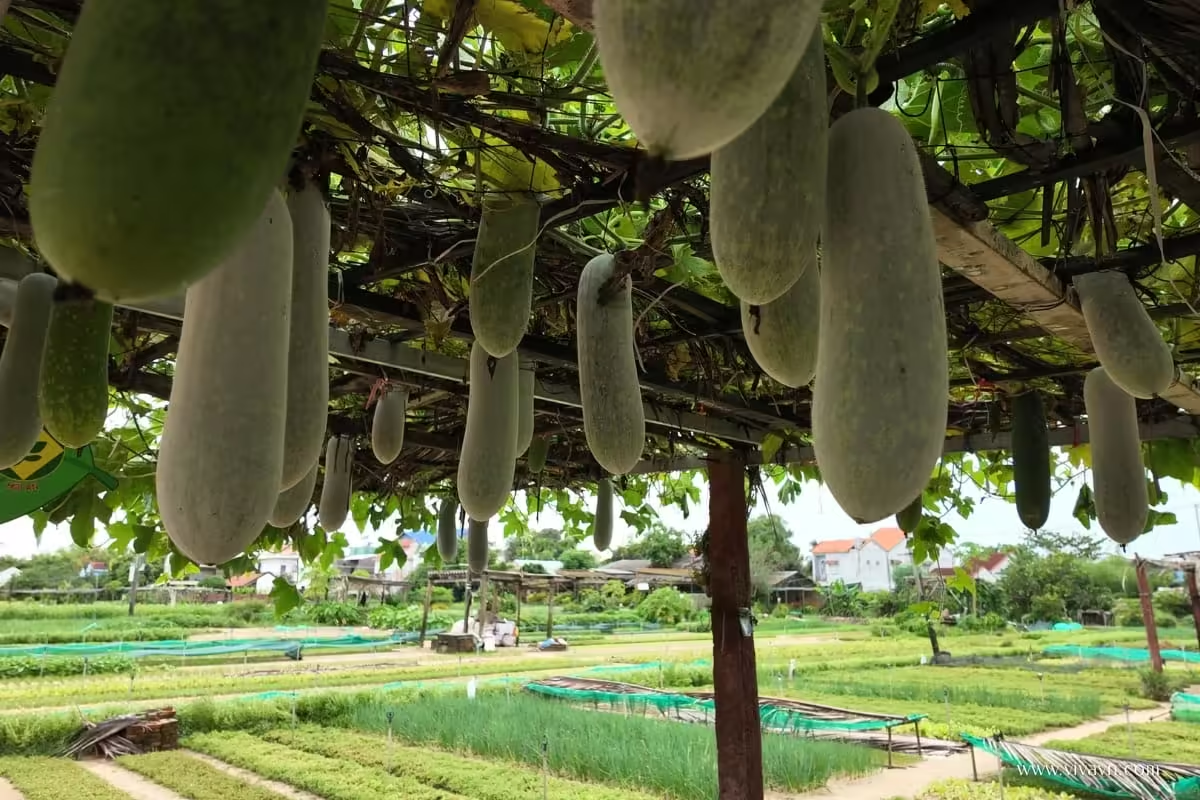
Winter melon trellis in Vietnam with white-coated, fuzzy fruits.
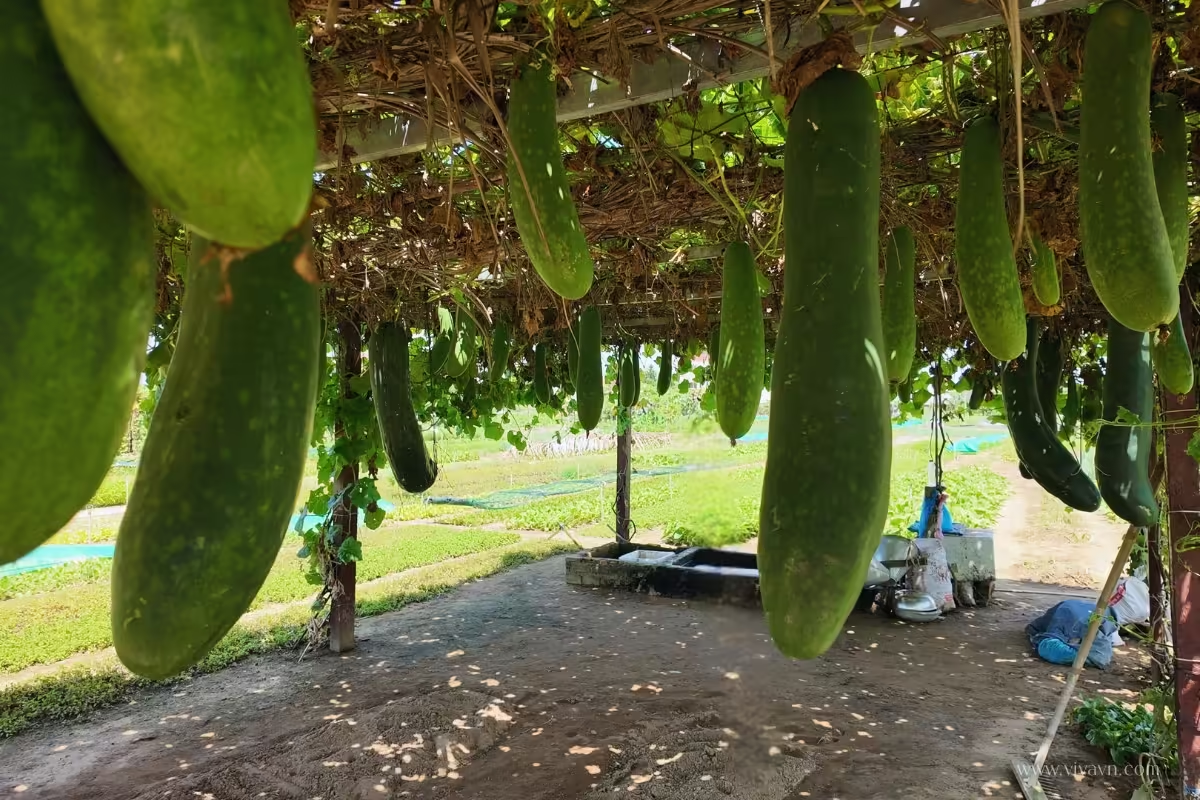
A trellis full of long winter melons with smooth green rinds, grown without the typical white coating.

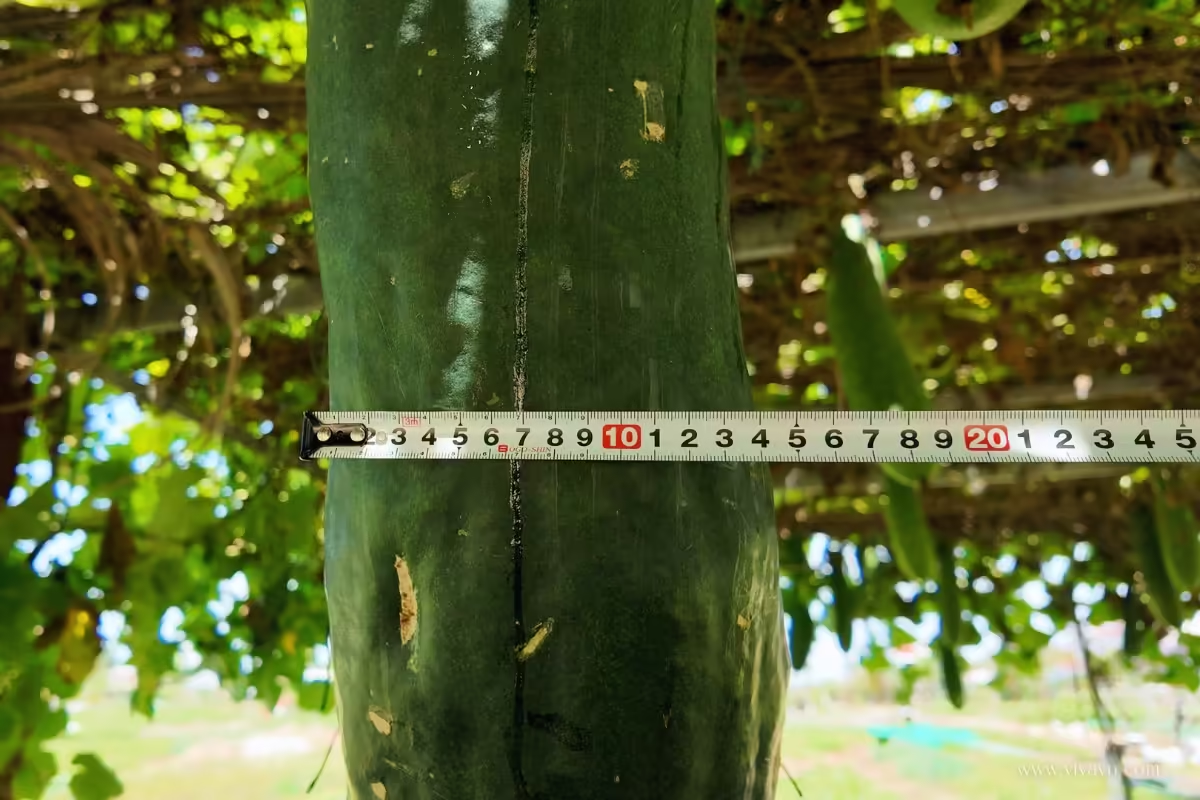
This winter melon measures up to 70 centimeters in length and around 15 centimeters in diameter
Winter melon is technically a fruit—it grows from a flower and contains seeds, which are typical characteristics of fruits. However, in cooking, it’s treated as a vegetable—commonly used in soups and stews rather than eaten sweet or raw.
The vines, leaves, and flowers of winter melon
Winter melon is a fast-growing vine in the gourd family. While it can grow along the ground, it’s more commonly supported on a trellis. This method improves air circulation, keeps the fruit clean, and makes harvesting easier.
The plant has large, lobed green leaves and produces bright yellow flowers. These blooms appear along the vine and are essential for pollination and fruit development.
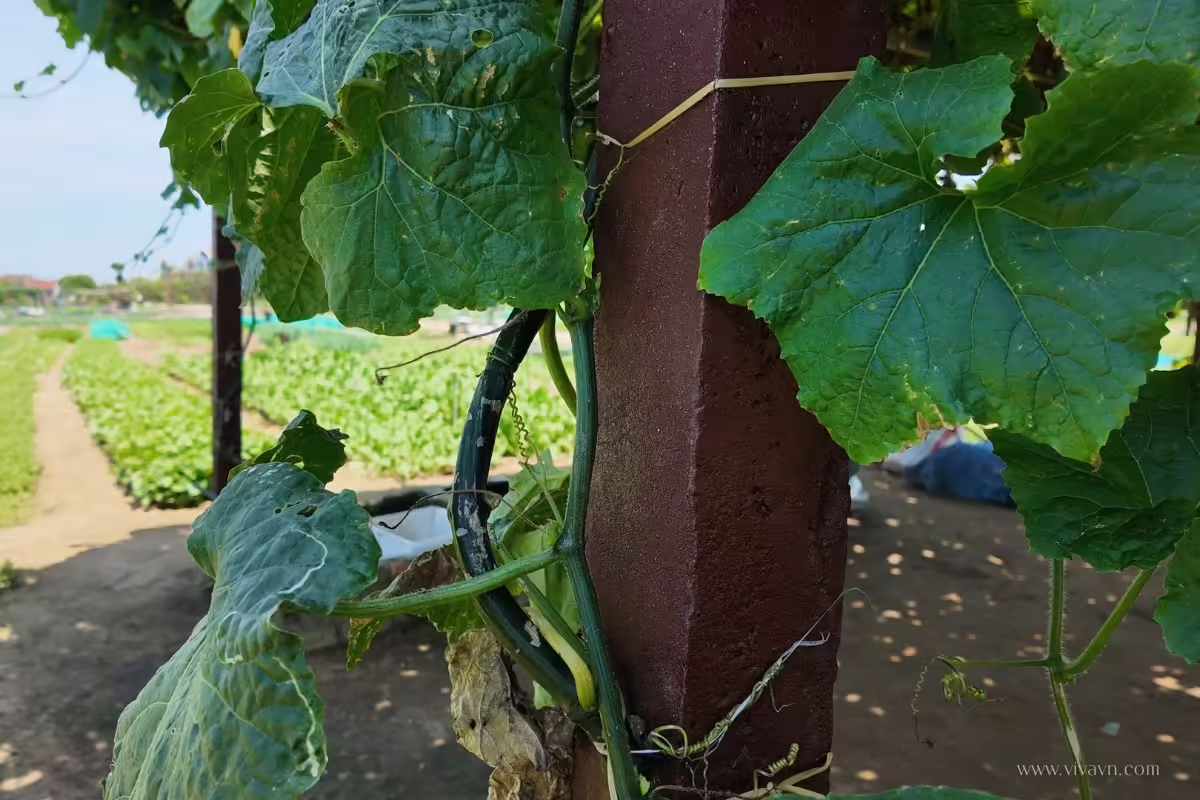
A close-up view of a winter melon vine climbing a trellis
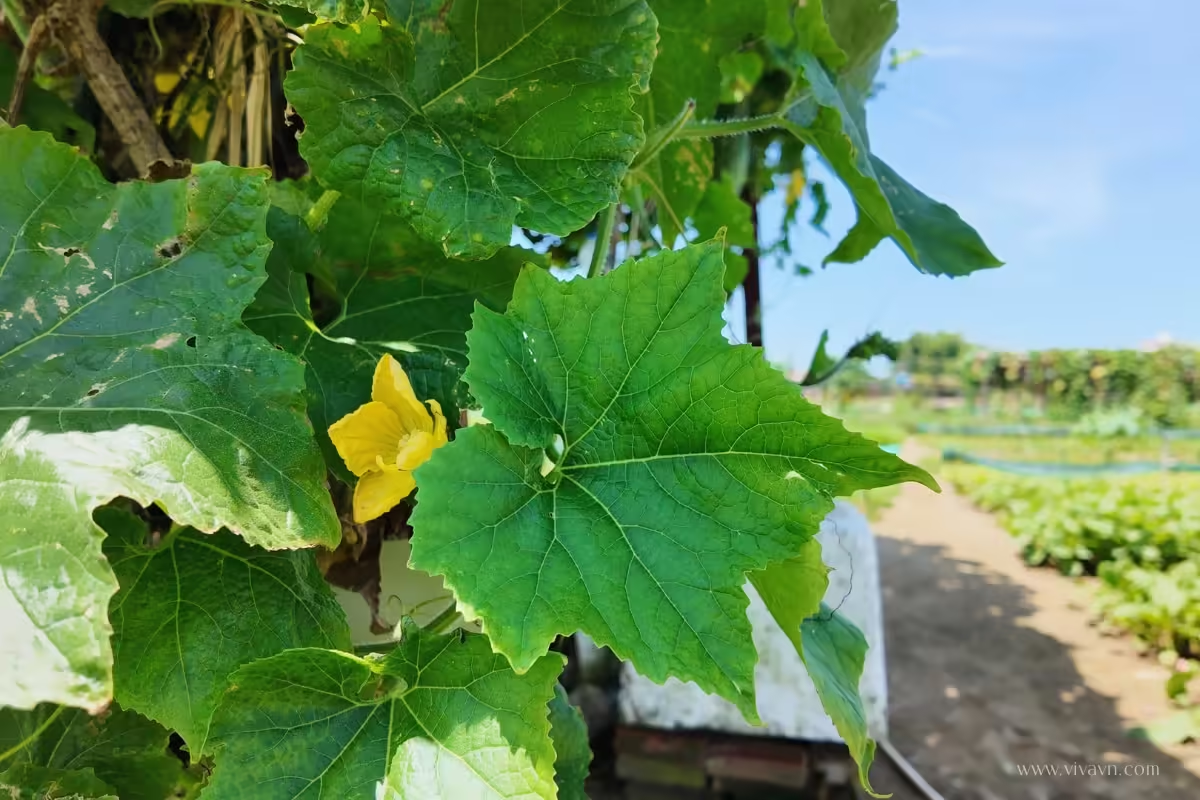
Winter melon leaves, easily recognized by their lobed shape
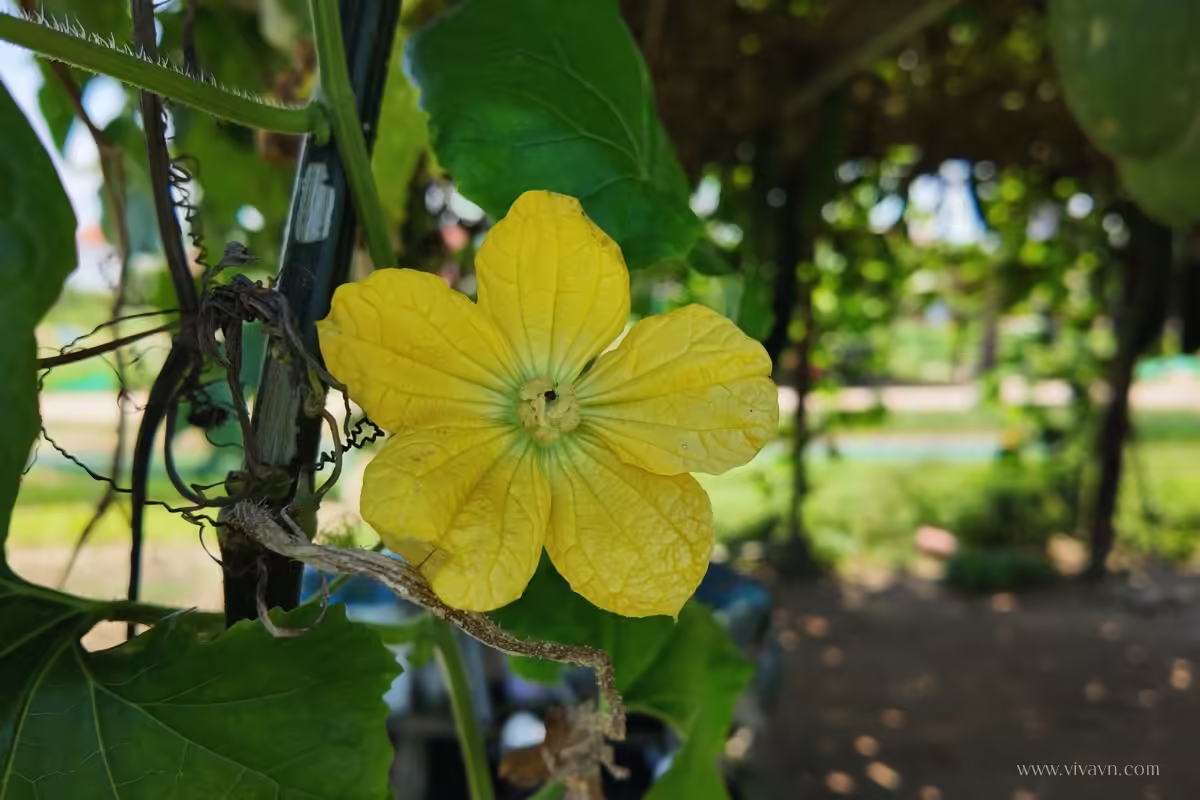
Yellow winter melon flower blooming on the vine in a Vietnamese garden
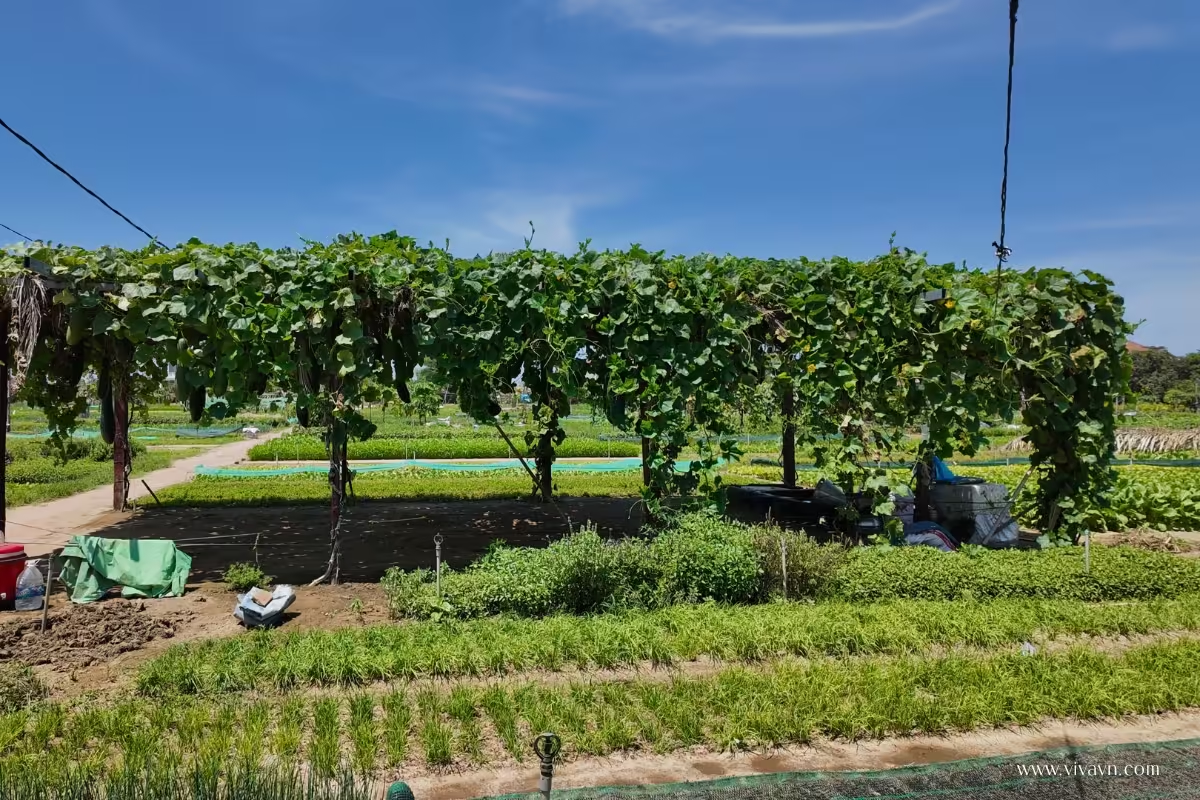
A thriving winter melon vine climbs across a handmade trellis in a traditional Vietnamese vegetable garden
Taste and flavor of winter melon
If you’ve never tried winter melon before, don’t expect a burst of flavor—because this gourd is all about subtlety. It has virtually no aroma, and when you bite into it, the first impression is its crisp texture and high water content. The taste? Mild, watery, and nearly bland.
But that’s actually what makes winter melon useful in cooking. Its neutral flavor allows it to absorb the taste of the ingredients it’s cooked with. In Vietnamese soups, for example, it picks up the flavors of pork or shrimp broth and adds a clean, refreshing texture to each bite.
Which part of the winter melon do you eat?
If you’ve never cooked with winter melon before, here’s a quick guide to what’s inside—and what to do with each part:
Outer rind (inedible): Tough green skin, usually peeled before cooking.
White flesh (edible): Crisp, juicy, and flavor-absorbent—this is the part used in cooking.
Seed core (discarded): Soft, spongy center with seeds. Typically removed before cooking.
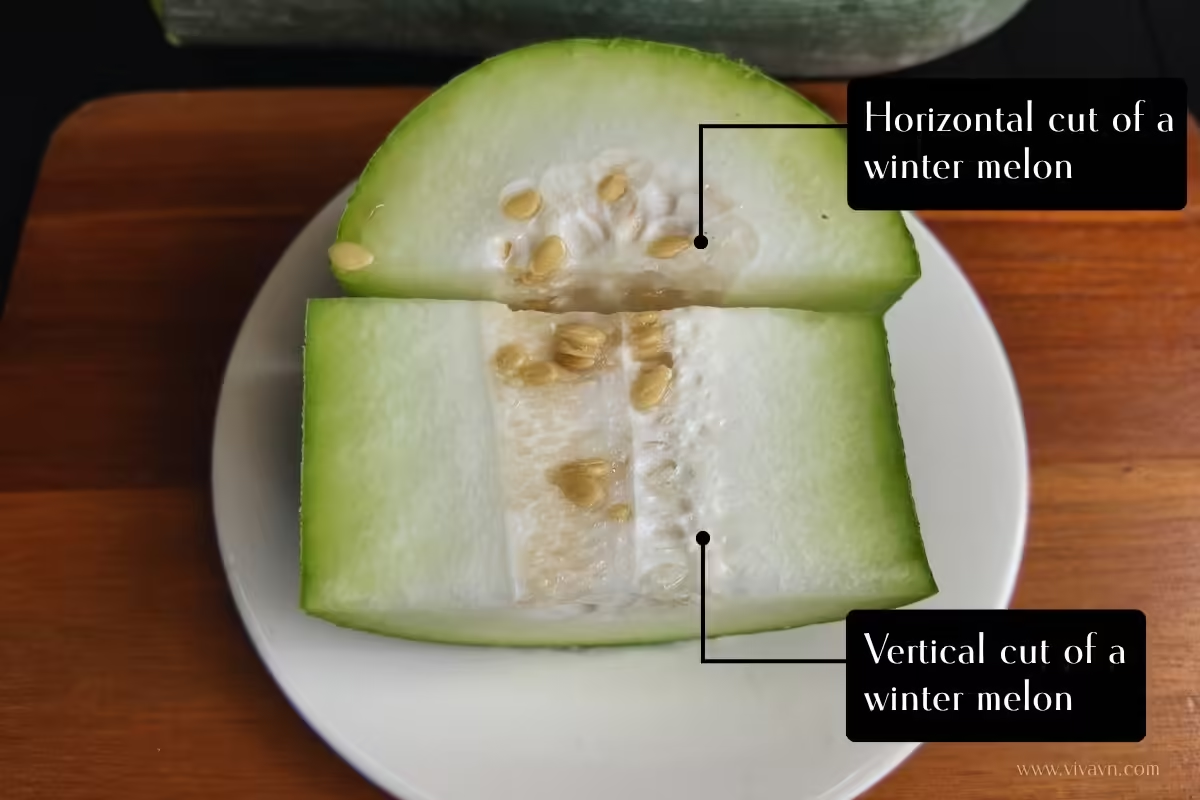
A winter melon displayed both crosswise and lengthwise—highlighting its crisp white flesh and pale seeds nestled in the soft core.
In Vietnam, winter melon is prepared by cutting away its thick, firm rind with a sharp knife. The soft inner core containing the seeds is also removed. The remaining white flesh is then sliced, with the thickness depending on the cook’s preference and the type of dish. Thin slices are often used for quick-cooking soups, while thicker chunks may be added to stews.
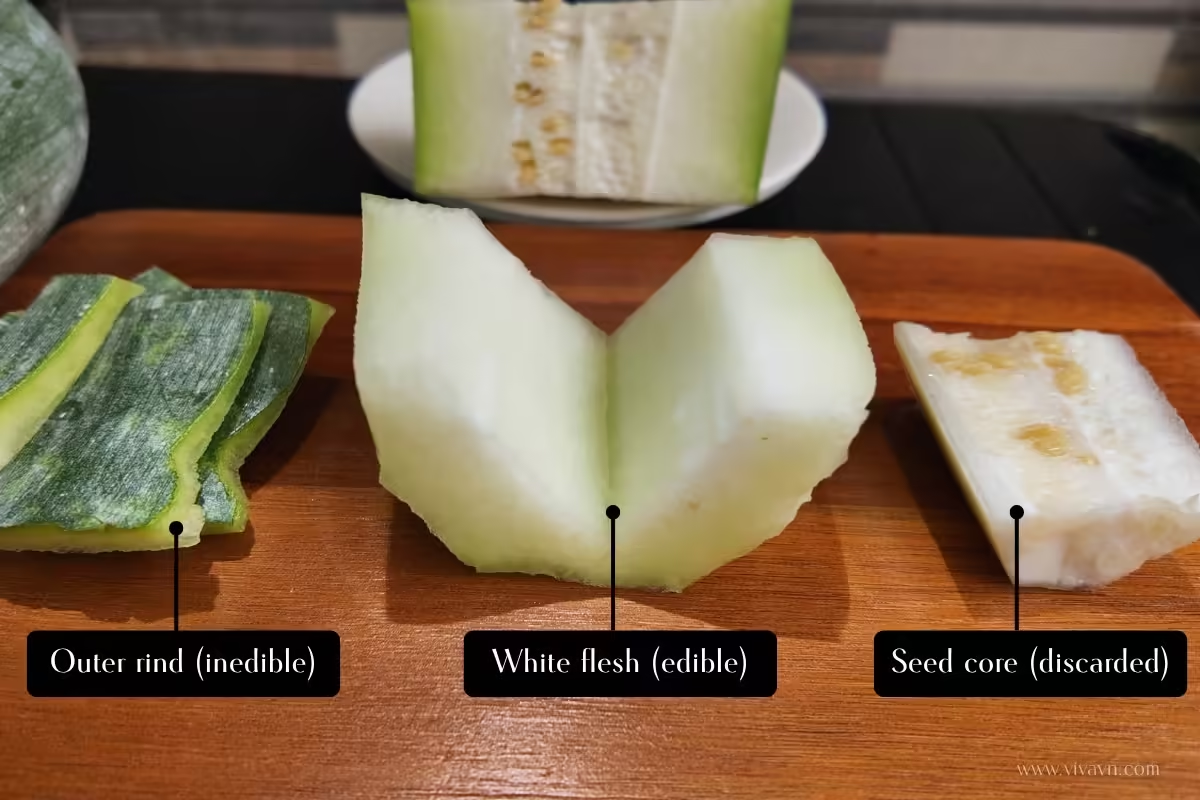
Inside a winter melon: rind, flesh, and seeds
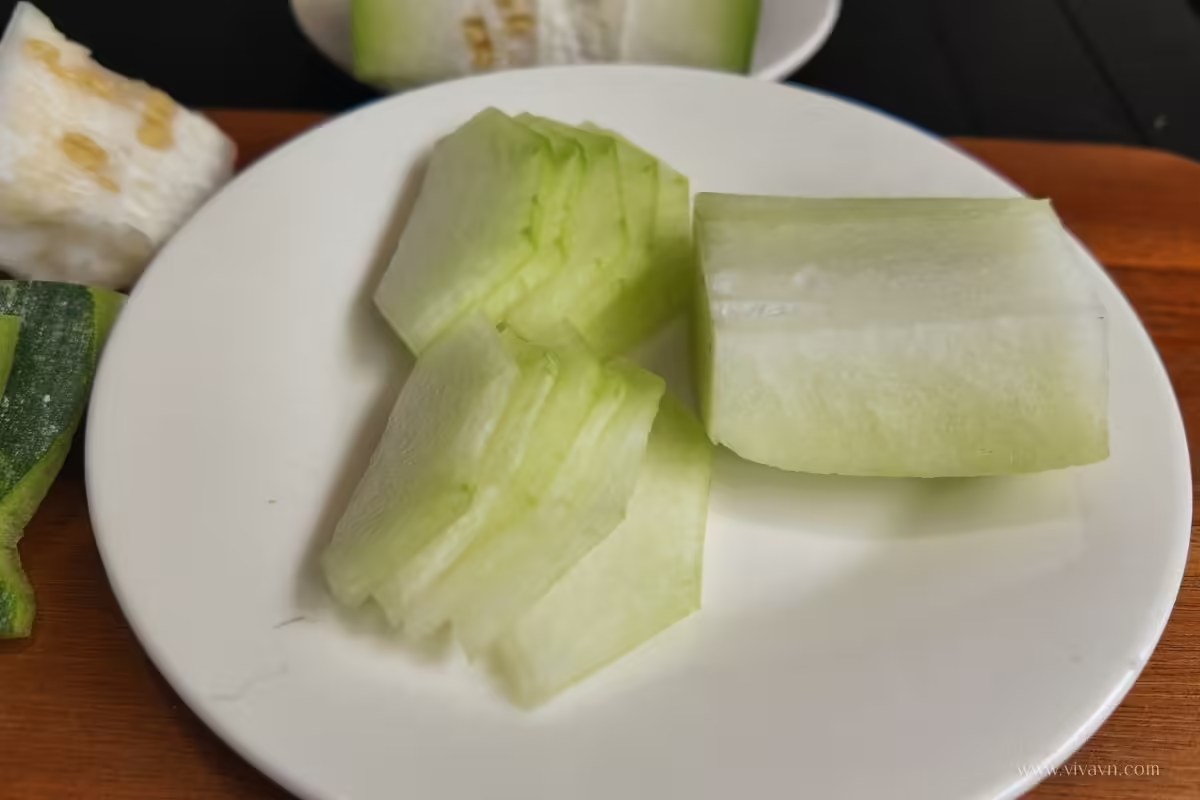
Winter melon slices after peeling and removing the seeds.
Popular Vietnamese dishes with winter melon
Here are some common ways winter melon is used in everyday Vietnamese cooking—simple, light dishes you might enjoy if you’re familiar with the cuisine.
Winter melon soup with pork ribs (bi dao ham xuong)
This simple Vietnamese soup is made with pork ribs, chopped winter melon, and basic seasonings like salt, pepper, shallots, and fish sauce. Everything is simmered until the ribs are tender and the melon turns soft. Just before serving, the soup is topped with fresh scallion leaves and a few slices of vibrant red chili for a pop of color and extra flavor. It’s a light, healthy dish commonly served with rice in everyday Vietnamese meals.
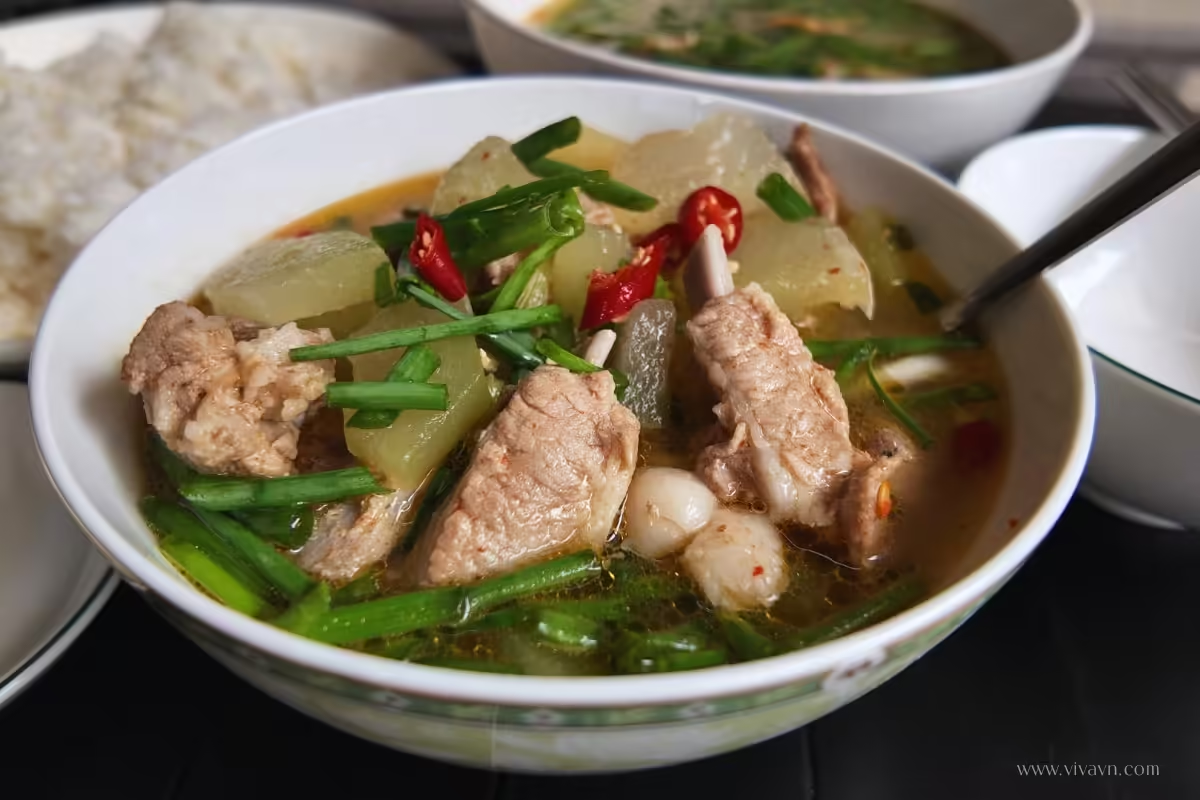
Winter melon soup with pork ribs, a comforting dish often served in traditional Vietnamese home-cooked meals.
Winter melon soup with shrimp (canh bi dao nau tom)
In this Vietnamese dish, peeled shrimp are either minced or left whole, then sautéed with simple seasonings. Once cooked, water is added and brought to a boil. Sliced winter melon is then added and simmered until just tender. The result is a light, naturally sweet soup that’s both refreshing and easy to make.
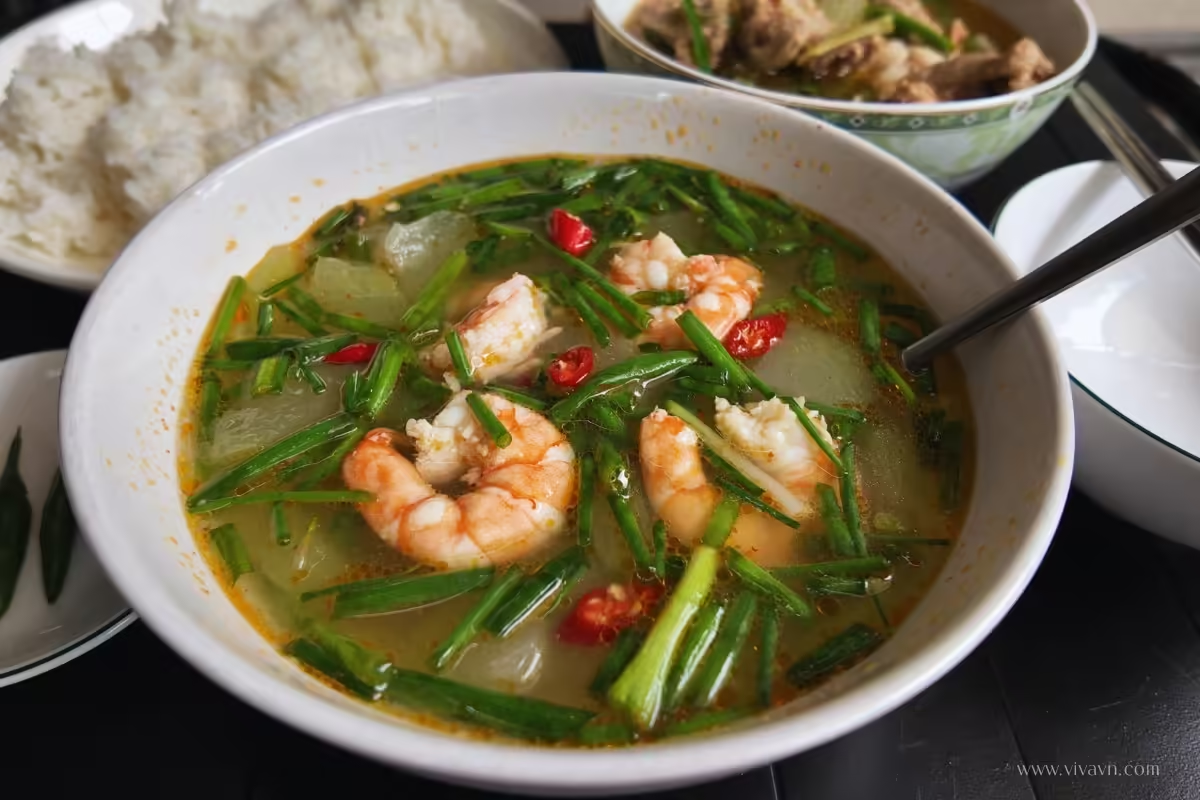
Simple yet flavorful—this Vietnamese shrimp and winter melon soup is perfect for hot days or light dinners.
Vietnamese winter melon tea (tra bi dao)
To make this refreshing drink, mature winter melons are washed, sliced, and sun-dried. Once fully dried, the slices are lightly roasted over low heat to deepen the flavor and preserve them longer. The tea is made by simmering the dried melon slices with rock sugar for about 1 to 1.5 hours until the liquid turns a golden brown. Let it cool, add ice, and enjoy a sweet, cooling beverage perfect for hot days.
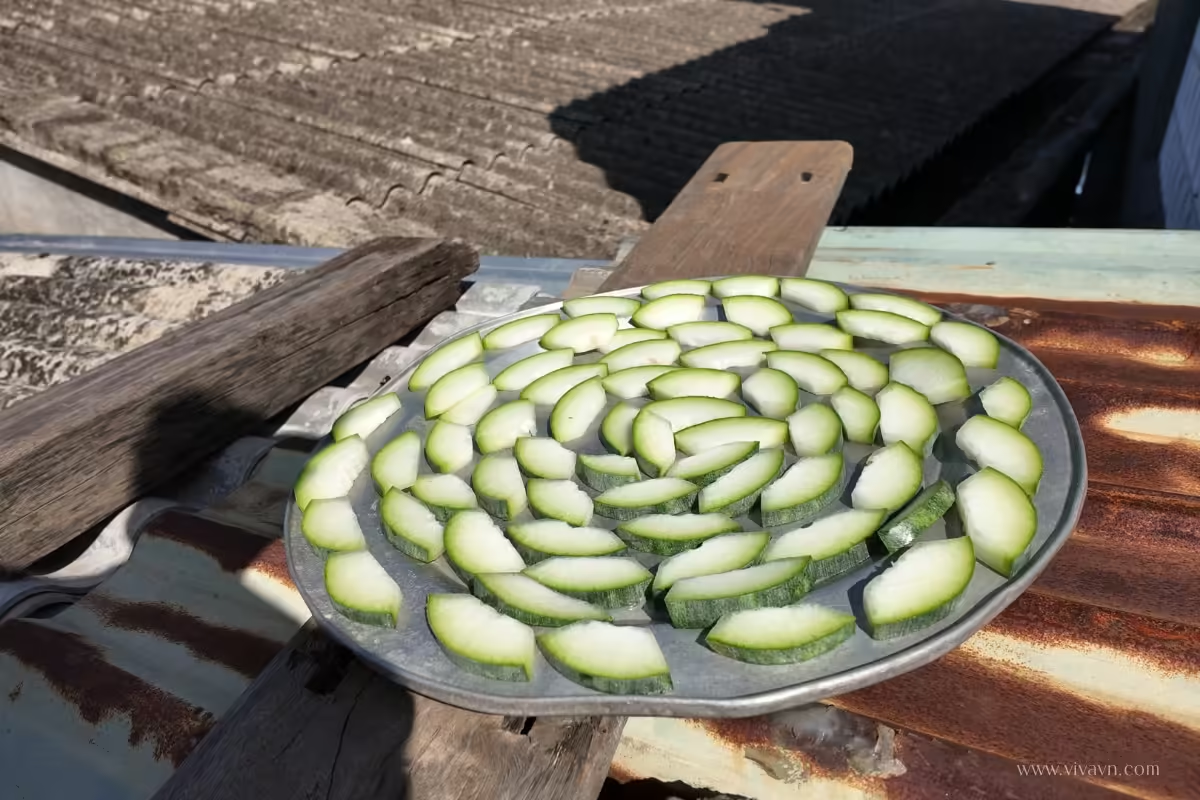
Sun-drying thick chunks of winter melon—the first step in making traditional homemade winter melon tea.
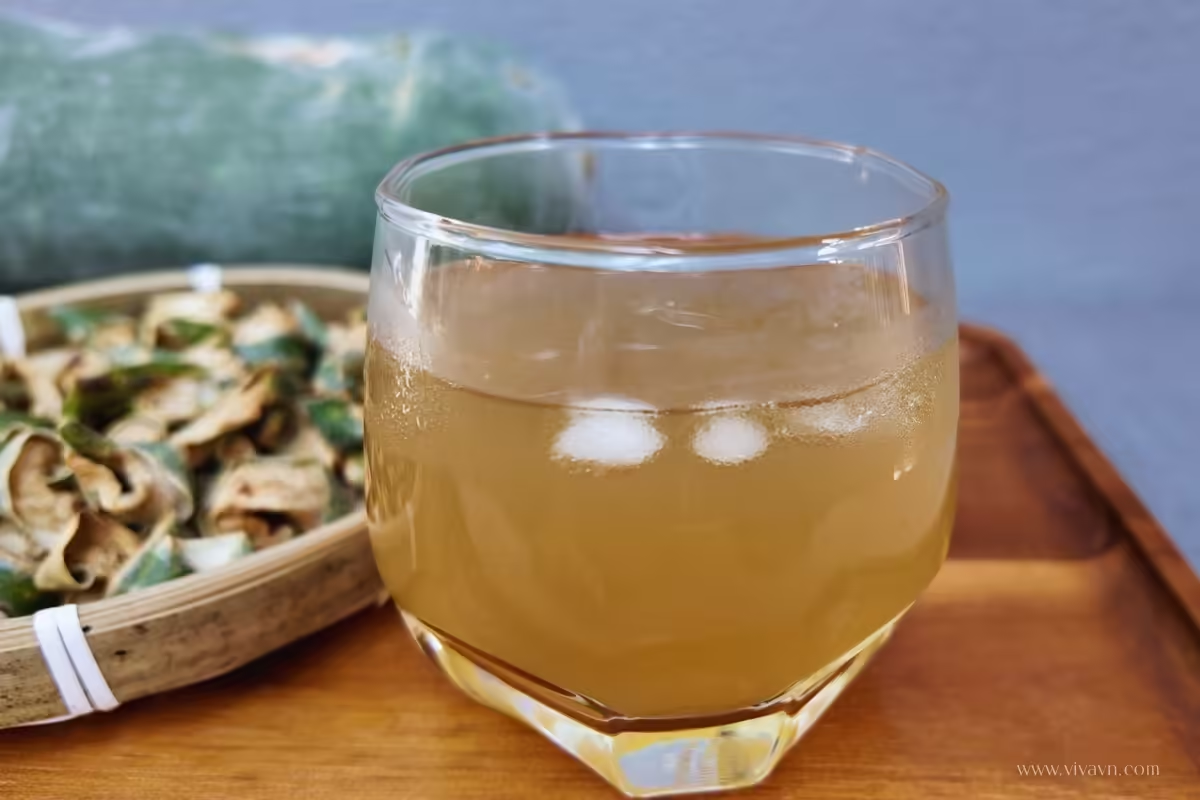
A chilled glass of winter melon tea—sweet, earthy, and perfect for hot summer days.
Candied winter melon (mut bi dao)
This traditional Vietnamese treat is especially popular during Tet, the Lunar New Year. It’s made by cutting winter melon into rectangular strips, soaking them in sugar, then gently cooking until a white sugar coating forms on the outside.
The texture is slightly crisp on the outside and chewy inside—translucent, firm, but not too soft. Lightly sweet and refreshing, candied winter melon pairs perfectly with Vietnamese tea.
Nutritional highlights of winter melon
Here’s the nutritional breakdown for a 3.5-ounce (100-gram) serving of winter melon, based on USDA data:
| Nutrient | Amount | Notes |
|---|---|---|
| Water | 96.1 g | Helps keep the body hydrated. |
| Calories | 13 kcal | A very light, low-calorie vegetable. |
| Fiber | 2.9 g | Good for digestion and gut health. |
| Carbohydrates | 3 g | Provides a small amount of natural energy. |
| Vitamin C | 13 mg | Supports the immune system. |
| Sodium | 111 mg | Naturally contains some sodium—something to be aware of. |
| Calcium | 19 mg | May support bone and teeth health. |
| Iron | 0.4 mg | Contributes to red blood cell function. |
| Magnesium | 10 mg | Involved in muscle and nerve function. |
| Zinc | 0.61 mg | Plays a role in immune health and healing. |
Growing and harvesting winter melon in Vietnam
Winter melon thrives in tropical climates with warm sunshine and high humidity, like Vietnam. Vietnamese farmers typically grow winter melon between December and March, when the weather is most favorable for this sun-loving vine.
The growing process begins by sowing seeds directly into the soil, followed by building trellises to support the climbing vines. After pollination, the fruit takes around 40 to 50 days to mature. With proper care, a single winter melon plant can produce fruit three to four times during its growing season.
Once harvested, the fruits are taken to local markets, where they’re sold fresh. Thanks to their thick protective skin, winter melons can be stored for several months without spoiling.
Winter melon is an annual plant that lives for about six months. It grows fast in the summer heat, bears fruit, and then naturally dies off as the season ends.
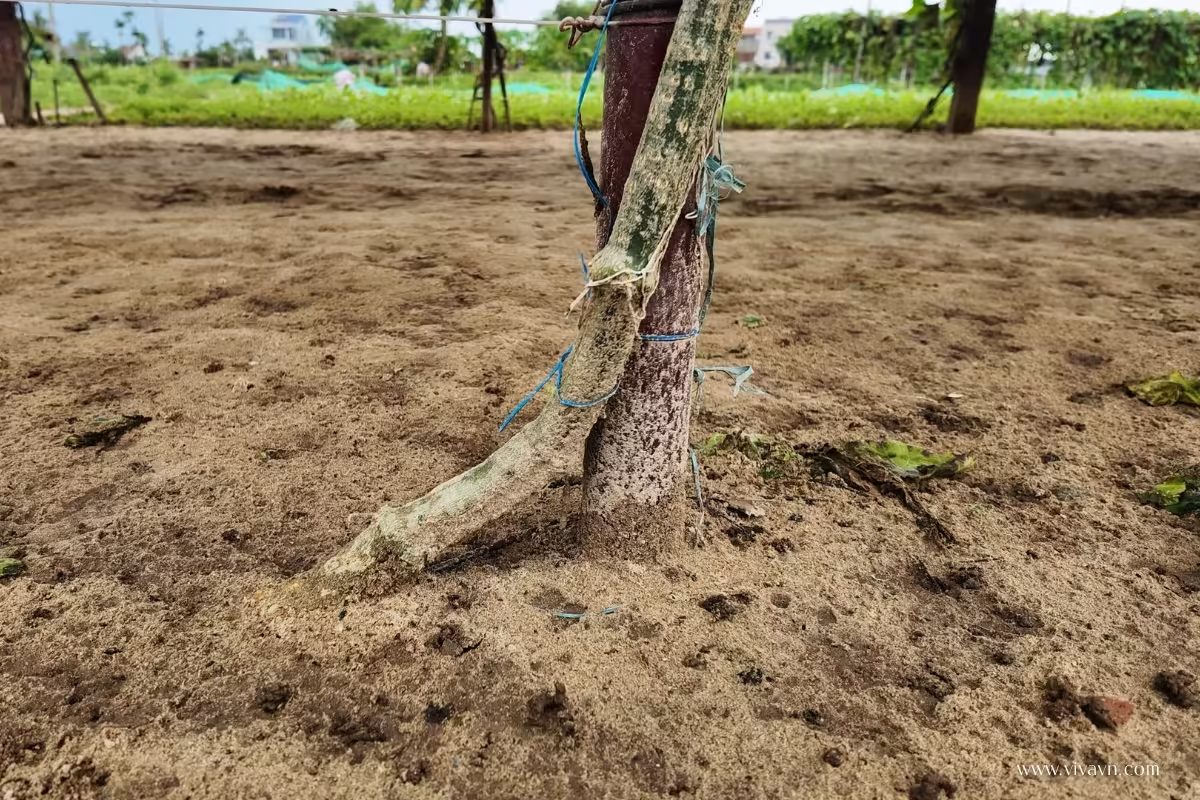
Well-drained sandy loam soil ideal for growing winter melon in Vietnam
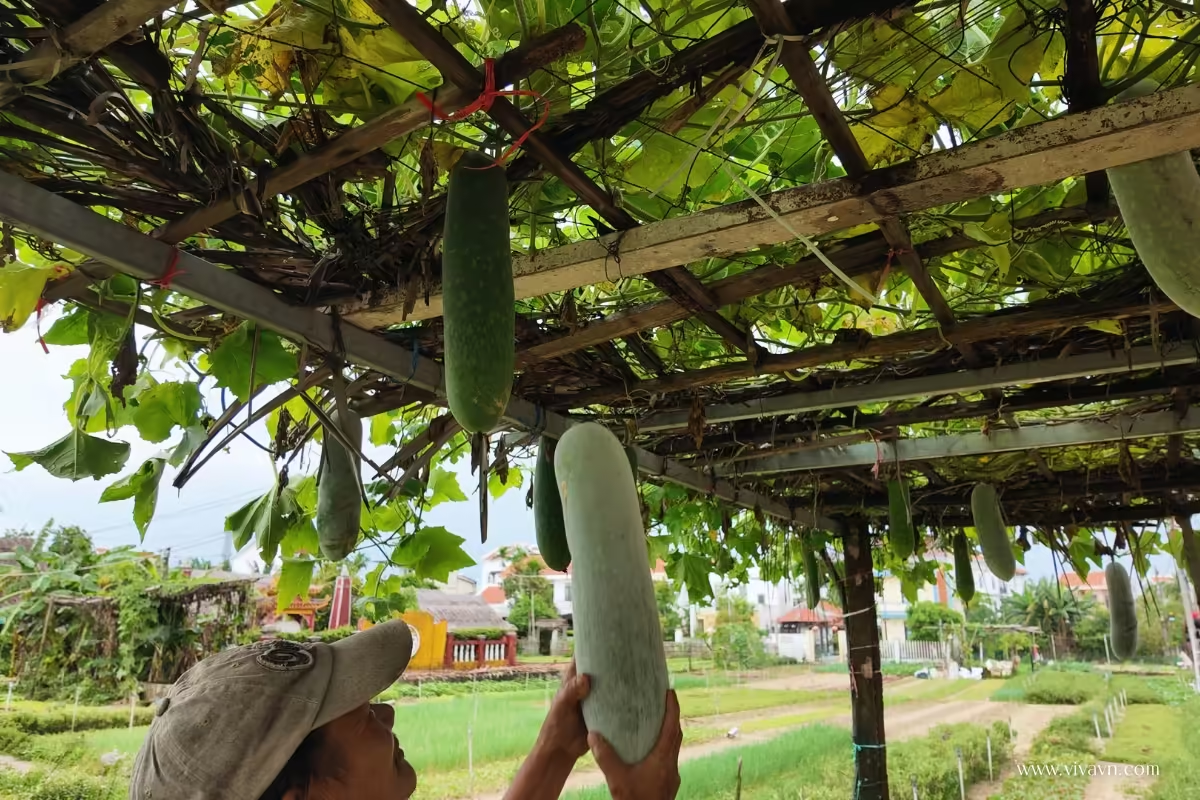
Vietnamese farmer handpicking a fresh winter melon from the vine, ready for market
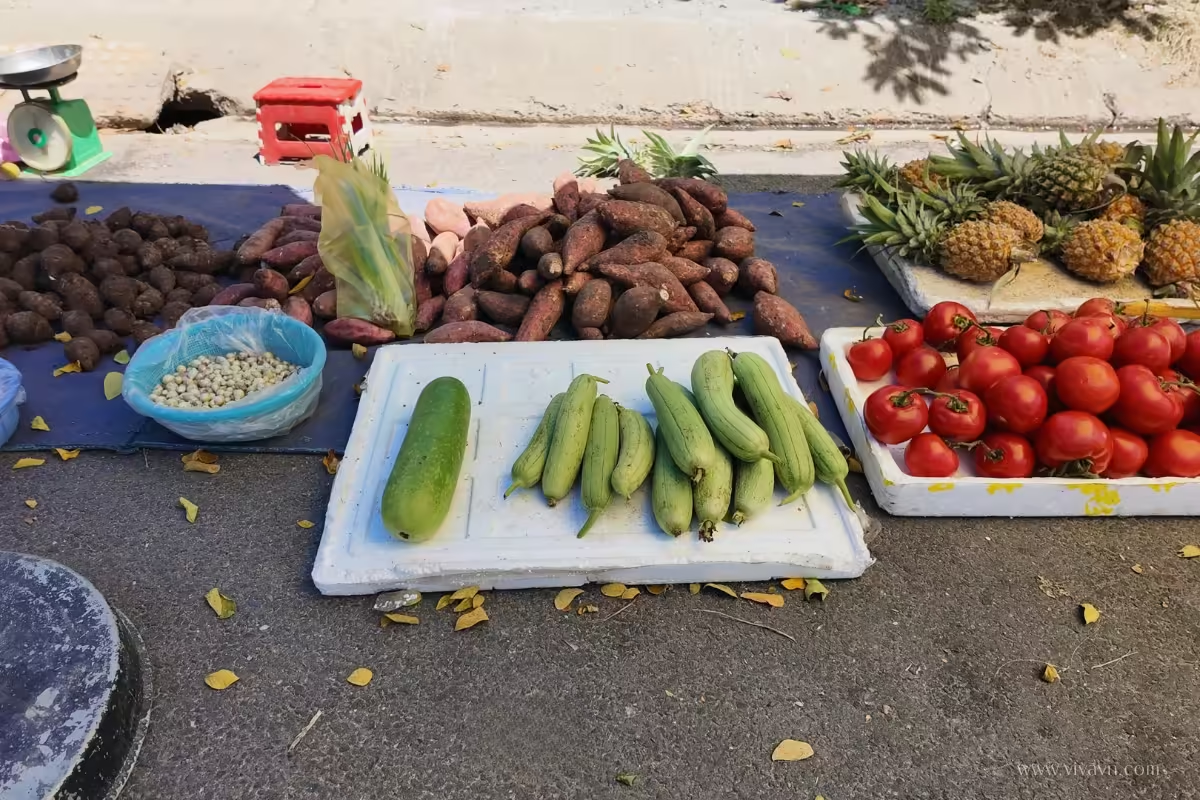
A single winter melon sits among other vibrant produce at a traditional Vietnamese market stall
Frequently asked questions about winter melon
What is winter melon, and what does it taste like?
Winter melon is a large, green gourd commonly used in Asian cooking. It has a mild, bland, and watery taste. In Vietnam, it’s called “bi dao” and is often used in soups, teas, and even snacks.
Is winter melon a fruit or a vegetable?
Botanically, winter melon is a fruit because it develops from the flower of the plant and contains seeds. However, it’s usually treated as a vegetable in cooking, especially in savory dishes like soups and stir-fries.
How do you cook winter melon in Vietnamese cuisine?
Vietnamese cooks use winter melon in a variety of ways. It’s often simmered in soups with pork ribs or shrimp, turned into a refreshing herbal tea, or even made into a sweet treat for Lunar New Year called mut bi dao (candied winter melon).
Can you eat winter melon raw?
While technically safe to eat raw, winter melon is almost always cooked because its raw texture is firm and its flavor is very bland. Cooking helps soften the flesh and allows it to soak up savory or sweet flavors.
What is winter melon tea, and how is it made?
Winter melon tea is a traditional Vietnamese drink made by simmering dried winter melon slices with rock sugar. It’s sweet, caffeine-free, and served cold as a refreshing drink on hot days. In Vietnam, it’s known as tra bi dao.
How do you store winter melon, and how long does it last?
Thanks to its thick skin, the whole winter melon can be stored in a cool, dry place for several weeks or even months. Once cut, it should be wrapped and refrigerated, where it will stay fresh for up to 3–5 days.
Share on FacebookShare on X (Twitter)Share on PinterestShare on WhatsappShare on LinkedinShare on TelegramShare on Email
- https://www.youtube.com/@VivaVNOfficial
- https://www.facebook.com/vivavnofficial2024
- https://www.pinterest.com/vivavnofficial/
© 2025 VivaVN. All rights reserved.

Leave a Reply